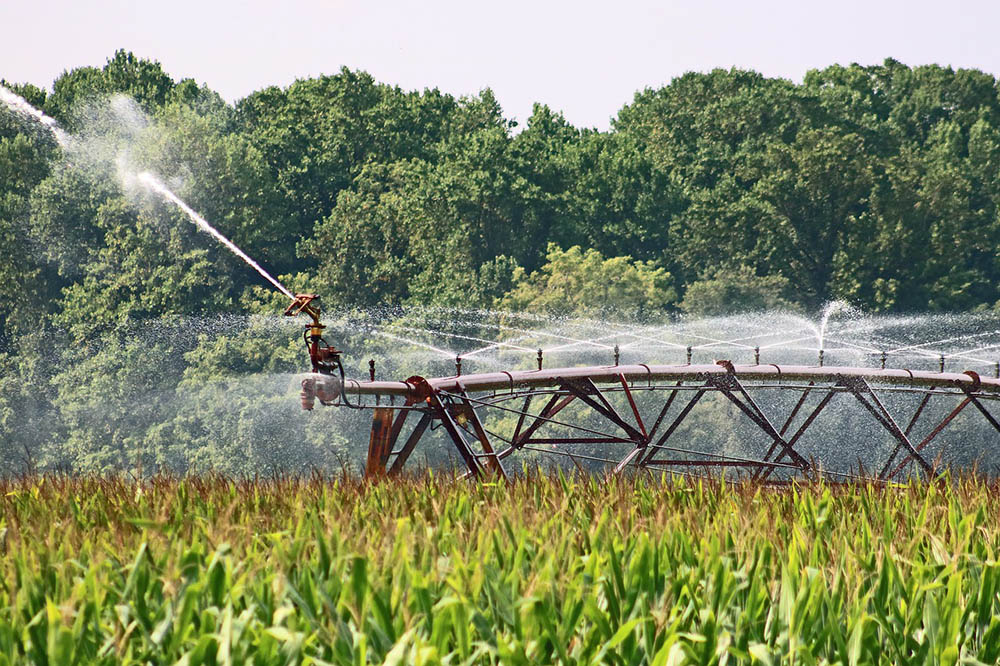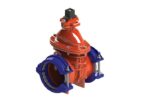Exclusive interview: H2O Global News editor Siôn Geschwindt spoke with AQUAOSO CEO Christopher Peacock about the climate challenge, the importance of data and how to build water resilience in the agricultural sector.
Agriculture accounts for approximately 70% of all freshwater withdrawals globally.
So, it goes without saying that water forms the backbone of the agricultural economy, and our survival.
Yet, climate change is leading to more frequent and intense droughts, floods, and wildfires, posing a risk to agricultural supply chains and the livelihoods of farmers.
These risks exert an increasing influence on the approval or refusal of agricultural loans – which many farmers depend on.
As water becomes scarcer, agricultural lenders are often unsure of how this will affect their portfolio.
The result? Without a clear idea of what constitutes a sound investment, many farmers are getting refused loans because banks are unsure about the current and future risks that climate-related water shortages present.
‘Water risk is business risk’
Flooding, water scarcity, and brine intrusion are all climate-related water risks that can lay a direct financial burden on farmers.
For instance, if a farmer runs out of water and their crop fails, they might not be able to pay back loans. Over the longer term, their land might lose value too.
Moreover, for farmers to adapt to climate change they must adopt new techniques and technologies and upgrade their infrastructure. But this costs money.
“In many cases, an obstacle to better water management can be a lack of finance,” said CEO of AQUAOSO, Christopher Peacock. “A lack of capital can delay planting and harvesting decisions, potentially disrupting the entire supply chain.
“Lenders must pay closer attention to water security and factors that can determine the overall risk of a loan.
“Although climate change has long been on lenders’ minds, water risk is now a major concern as well.”
AQUAOSO is a US-based climate fintech company that use big data, analytics and remote sensing to better understand water risk.
When agricultural lenders are unsure of the water-related risks of a farming operation, they enlist the help of AQUAOSO to give them insights into whether or not that farm is a sound investment.
They run climate analytics against a bank’s entire loan portfolio, reporting on current risks and scenario testing to predict future ones.
What about the farmers?
It would be easy to assume that giving lenders a clearer picture of water risk would lead to less loans being handed out. But it’s not that simple.
“Helping lenders understand the risk can actually improve the loan approval rate,” said Peacock.
He added: “We believe that financial institutions have a major role to play in building resilient agricultural and food systems, and our risk analysis helps these institutions meet the needs of our farmers.”
As the sector faces a growing number of challenges, robust financial investments are needed more than ever to support the global food system.
But these investments should also be sustainable. As lenders understand water risks more clearly, they will tend to lean toward those farms practicing sustainable water management.
However, farmers who are less financial capable and lack the knowledge risk getting left behind.
To avoid this, AQUAOSO suggests lenders work with farmers who may not initially be granted loans, stewarding them as they work on their water management practices.
Then once they’ve improved their practices and lowered their water risk, they’ll be able to qualify for loans.
For this to work, lenders will have to leverage their influence in the agricultural sector to encourage a shift to water resilience and place water firmly at the centre of their business ethos.
Ways forward
To help ease this transition, the Environmental Defense Fund recommends that banks develop lending programs and products to support farmers in transitioning to conservation practices that build resilience. For instance, through multi-year loan terms and adjusted repayment periods — and incorporate data on the benefits of conservation practices in credit rating processes.
While some climate risks are difficult to anticipate, there are growing opportunities and resources available for farmers and agricultural lenders to better understand their vulnerabilities related to climate change — and take steps to build resilience.
Assessing risk at the lending institution level with the assistance of companies such as AQUAOSO is helping lenders adopt and implement strategies to monitor and mitigate climate risk.
To bridge the critical capital and skills gaps that exist, the World Bank also recommends leveraging both public and private capital for climate-smart agriculture investments and providing technical assistance to lenders and borrowers alike.
This includes densifying key entry points, for directing climate finance into agriculture and linking financial institutions, smallholders and agricultural SMEs.
The Green Finance Platform also emphasises the role of insurance companies in helping to manage climate risks by allowing more flexible index pay-outs based on changes such as rainfall over time or average yield losses, rather than larger pay-outs triggered by crop failure.
Toward climate-smart agriculture
According to the Food and Agricultural Organisation of the United Nations (FAO), climate-smart agriculture is an approach that helps guide actions to transform agricultural systems towards climate resilient practices.
This approach to food production looks to do more with less. To sustainably increase agricultural productivity while building resilience to climate change and reducing carbon emissions
Achieving climate-smart agriculture will require targeted investment, financial backing and strong partnerships that promote sustainable practices and support farmers – particularly small-scale, low-income operations.
The good news is that there is an upward trend in sustainable agriculture investment, which has grown 32.5% annually since 2013.
The bad news is that as the climate crisis worsens, many farmers are struggling to make ends meet and investors are scrambling to deal with investment doubt and insecurity.
Data and collaboration will be key to overcoming these hurdles. Data to inform smart decision-making and situational awareness, and collaboration between lenders, borrowers, and other stakeholders to build a water resilient sector fit for the future.
Do you have an article or video that you would like to share? Submit your article here or keep up with the latest news from the water industry and wastewater industry by subscribing to our weekly newsletter.







